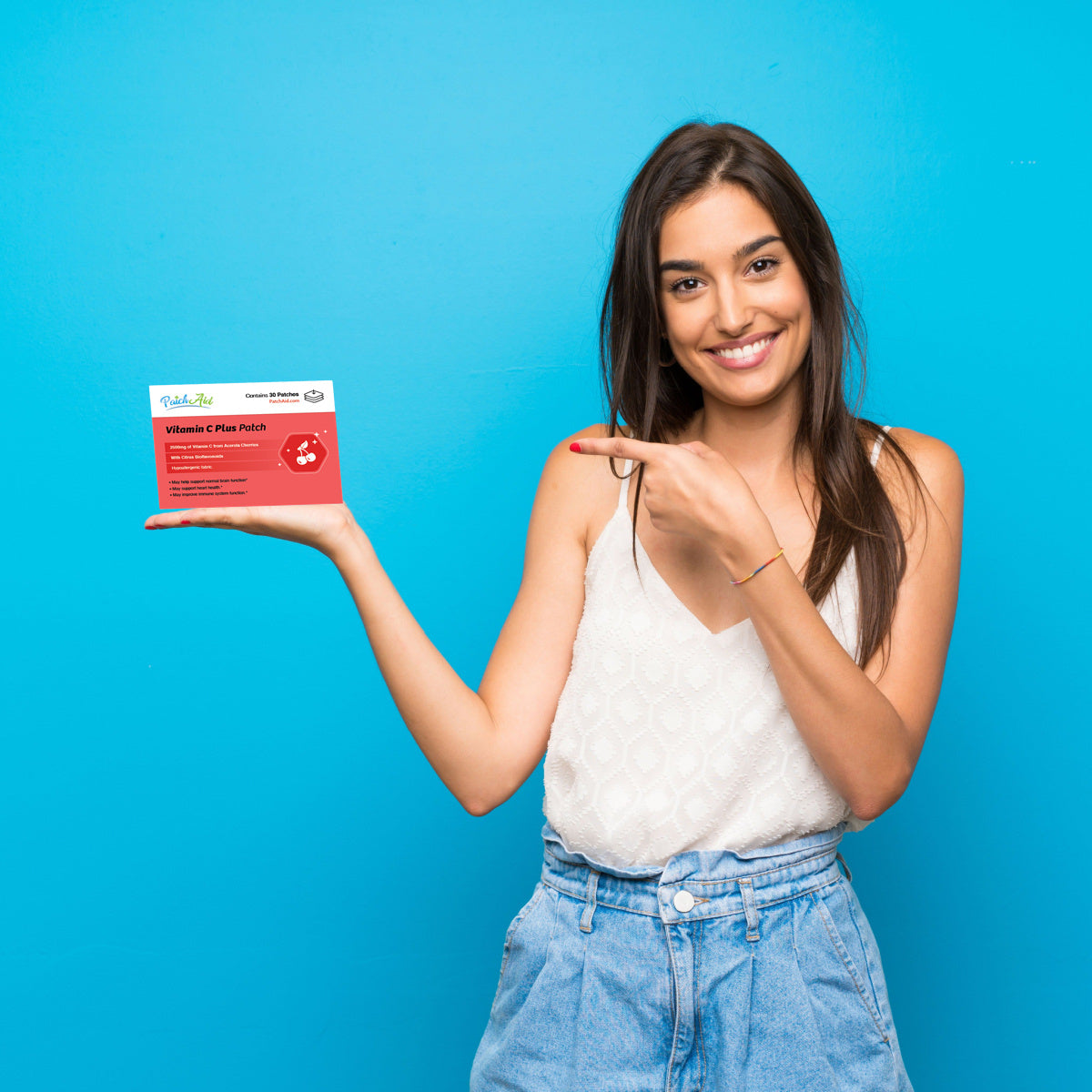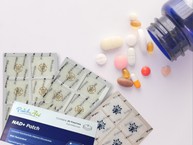Vitamin patches are coming into the spotlight now, but you may have concerns, naturally. Patches are certainly different from traditional vitamins, since you may be used to the idea of swallowing your vitamins and other supplements. Do vitamin patches really work? Here is the information to know about vitamin patches.
How Can You Get Vitamins without Swallowing Them?
Let’s put this to rest right now. How can you get vitamins into your body without swallowing them? We all know that you eat food to get nutrients. So does it even make sense to put a vitamin patch on your skin and hope that you get nutrients?
Normally, you swallow nutrients. During the digestion process, they are absorbed from your gastrointestinal tract and into the bloodstream to the liver. Finally, they are put into the blood to get to where they need to go throughout your body.
Here’s how vitamins get into your system without you swallowing them. You put the patch on. The nutrients go through your skin and get into tiny blood vessels called capillaries. Then they can go into larger blood vessels so they can circulate to the rest of your body as needed. So, the active ingredients get into your bloodstream more directly with patches than with oral supplements such as capsules, tablets, or liquids.
Is There Any Research on Whether Vitamin Patches Work?
Vitamin patches may be a relatively new technology, but there is a growing body of research on vitamin patches. Clinical and controlled trials, and review articles, in peer-reviewed journals have looked at whether topical vitamin patches work in people and in animals. There has been a focus especially using vitamin patches among bariatric surgery patients, since they are at very high risk for nutrient deficiencies.
It is also good to remember that topical patches are not new for delivering ingredients into the body. Consider products such as nicotine patches, birth control patches, and a variety of adhesive patches for managing pain and inflammation, for example. Nobody questions the effectiveness of these types of products anymore. They are accepted as commonly used.
Technology in Vitamin Patches
Here is more detail in case you are not yet convinced or in case you are the curious type. Each PatchAid vitamin patch has a matrix style, or monolithic layer for suspending the ingredients in the adhesive part. When you apply the patch, heat and moisture from your skin activate the process so the ingredients are extracted from the adhesive and enter the skin. They get into the capillaries and bloodstream.
How Do You Use Vitamin Patches?
It is very easy to use vitamin patches. In short, just stick them on! Here are the steps for using PatchAid vitamin patches.
- Select an area of skin. The vitamin patch will stick better if you choose an area of skin without hair, lotion, or oil residues such as your shoulder, back, or hip. Clean and dry the skin.
- Remove the vitamin patch from the release liner. PatchAid vitamin patches come with a liner that is specially designed to be easy to peel off so that you do not need to worry about ripping the patch before applying it.
- Adhere the vitamin patch to your skin, pressing firmly.
- For best results, it is recommended to wear PatchAid vitamin patches for 8 hours. There is no additional benefit of wearing the topical patch longer than 8 hours.
- When finished, remove the vitamin patch, fold it in half, and discard it, keeping it out of the reach of children.
- Repeat with a new vitamin patch the next day.
Remember that It is ok to wear multiple PatchAid vitamin patches at a time, as long as your healthcare provider agrees, so you can go through these same steps with two or several patches.
When you use vitamin patches, you do not need to worry about having them on an empty or a full stomach, or about possible nutrient interactions. You also do not need to fear gastrointestinal symptoms, such as an upset stomach, caused by swallowing capsules.
What Nutrients Are in Vitamin Patches?
That is a great question, because PatchAid vitamin patches have vitamins and so much more. The specific ingredients depend on which patches you choose to use. These are some possible active ingredients in different vitamin patches.
- Vitamins, such as vitamin A, vitamin C, vitamin E, vitamin K, and B vitamins
- Essential minerals, such as zinc, iron, calcium, copper, selenium, magnesium, manganese, chromium, and more
- Other essential nutrients, such as omega-3 fatty acids
- Compounds that your body may use as building blocks, such as glucosamine, amino acids, chondroitin, carnitine, and GABA
- Herbs, enzymes, and antioxidants
- And more!
Vitamin patches can hold a wide variety of nutrients and other ingredients, and may be able to have higher quantities compared to the amounts in capsules if there are certain size limitations.
Where Do I Get the Best Vitamin Patches?
PatchAid has dozens of different vitamin patches in stock. Many of them come in clear and white options to be more discreet. You can choose from a 30-day, or 3, 6, or 12-month supply.
It is easy to shop at PatchAid, since you can get them delivered quickly. PatchAid has same-day shipping for orders placed before noon Eastern time. Shipping is always free for orders over $39.
You can get bigger discounts and save more money when you sign up for a subscription for various patches. Plus, you’ll never worry about running out, since your order will show up on your doorstep at intervals that you select.
Another way to save money is to join PatchAid’s Rewards program. That way, you can earn points for things like shopping, sharing on social media, and referring friends. Then, exchange your points for discounts when you make purchases.
It is always good to find a better way to support health, and vitamin patches are all the rage now. PatchAid patches are easy to use and available in many different formulations, so you can choose the ones that are best for you. Just be sure to ask your healthcare provider before taking any dietary or nutritional supplement.
*The Food and Drug Administration has not evaluated these statements. PatchAid patches are not intended to diagnose, treat, cure or prevent any disease. Anyone with a medical condition should seek the advice of a licensed medical practitioner. Individual results may vary.







